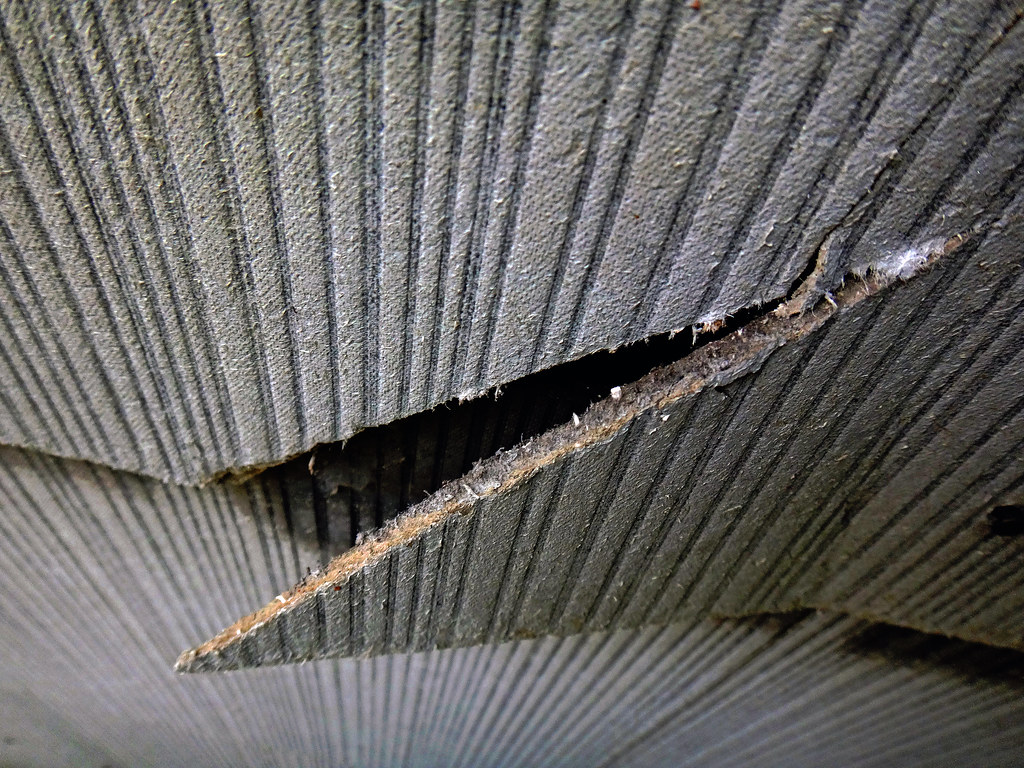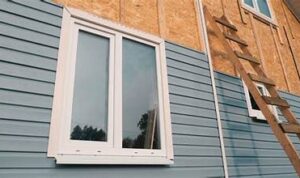Asbestos house siding has a long history and a controversial reputation. From its composition to potential health risks, this material has sparked debates and concerns among homeowners. Let's delve into the world of asbestos house siding and uncover the facts behind this fascinating yet problematic building material.
What is Asbestos House Siding?
Asbestos house siding refers to exterior cladding materials that contain asbestos fibers. These siding products were commonly used in the construction industry due to their durability, fire resistance, and insulating properties.
Composition of Asbestos House Siding
Asbestos house siding is typically composed of asbestos fibers mixed with cement or other binding materials to create a strong and weather-resistant material. The asbestos fibers provide strength and heat resistance to the siding, making it a popular choice for homes built in the mid-20th century.
History of Asbestos Use in Siding Materials
The use of asbestos in siding materials became widespread in the early to mid-1900s. Asbestos was valued for its fire-resistant properties and durability, making it an attractive option for siding products. However, with the discovery of its harmful health effects, the use of asbestos in construction materials, including siding, declined significantly.
Appearance and Characteristics of Asbestos House Siding
Asbestos house siding can have a textured or smooth finish, resembling traditional wood siding. It is known for its longevity and resistance to rot, pests, and fire. However, due to the health risks associated with asbestos exposure, many homeowners have opted to remove or replace asbestos siding with safer alternatives.
Health Risks Associated with Asbestos House Siding
Asbestos house siding can pose significant health risks due to the presence of asbestos fibers, which can be released into the air when the siding is disturbed or deteriorates over time. Inhalation of these asbestos fibers can lead to serious health conditions, making it important to understand the potential hazards associated with asbestos exposure from siding.
Potential Health Hazards of Asbestos Exposure
- Asbestos fibers can be easily inhaled when released into the air, especially during maintenance or renovation work on the siding.
- These tiny fibers can become lodged in the lungs and respiratory system, leading to inflammation and scarring over time.
- Prolonged exposure to asbestos fibers can increase the risk of developing serious respiratory conditions such as asbestosis, lung cancer, and mesothelioma.
How Asbestos Fibers Can Become Airborne
- Disturbance of asbestos house siding during repairs, renovations, or natural weathering can release asbestos fibers into the air.
- Once airborne, these fibers can linger for long periods and be easily inhaled by individuals in the vicinity.
- Improper handling or removal of asbestos siding can also release a significant amount of fibers into the air, increasing the risk of exposure.
Link Between Asbestos Exposure and Serious Health Conditions
- Asbestos exposure from house siding has been linked to the development of various respiratory diseases, including asbestosis, lung cancer, and mesothelioma.
- The latency period between exposure to asbestos fibers and the onset of these diseases can range from several years to decades, making early detection and prevention crucial.
- Individuals with a history of asbestos exposure, whether through siding or other sources, should monitor their health closely and seek medical attention if they experience any symptoms related to asbestos-related diseases.
Testing and Inspection of Asbestos House Siding
When it comes to asbestos house siding, testing and inspection are crucial steps to ensure the safety of homeowners. Identifying the presence of asbestos in siding is essential for proper maintenance and potential removal.
Methods for Testing and Identifying Asbestos in House Siding
- Visual Inspection: A visual inspection can help identify signs of asbestos in house siding, such as discoloration, cracking, or damage.
- Sampling and Analysis: Samples of the siding can be collected and sent to a certified laboratory for analysis to determine the presence of asbestos fibers.
- Professional Testing: Hiring a certified asbestos inspector can provide accurate testing results and recommendations for handling asbestos siding.
The Importance of Professional Inspection for Asbestos Siding
- Expertise: Certified asbestos inspectors have the knowledge and experience to properly identify asbestos in siding.
- Safety: Professional inspection ensures that proper safety measures are followed during testing and handling of asbestos siding.
- Legal Compliance: Professional inspection helps homeowners comply with regulations and guidelines related to asbestos removal and disposal.
When and Why Homeowners Should Consider Testing for Asbestos in Siding
- Before Renovations: Prior to any renovations or repairs on the house siding, testing for asbestos is recommended to avoid exposure risks.
- Buying or Selling a Home: Asbestos testing is essential when buying or selling a property to ensure the safety of occupants and comply with regulations.
- Signs of Damage: If there are visible signs of damage or deterioration on the siding, testing for asbestos should be considered to assess the risk.
Removal and Remediation of Asbestos House Siding
When it comes to dealing with asbestos house siding, removal and remediation are crucial steps to ensure the safety of occupants and the environment. Proper procedures must be followed to minimize the risk of exposure to asbestos fibers during the removal process.
Safe Procedures for Removing Asbestos Siding
- Before starting the removal process, it is important to wet the siding to prevent the release of asbestos fibers into the air.
- Wear appropriate personal protective equipment such as disposable coveralls, gloves, goggles, and a respirator with a high-efficiency particulate air (HEPA) filter.
- Use hand tools to carefully remove the siding without breaking it apart, as this can release asbestos fibers.
- Double bag all asbestos-containing materials in heavy-duty plastic bags labeled for asbestos disposal.
- Clean up the work area thoroughly using wet methods and HEPA vacuum to ensure no asbestos fibers are left behind.
Describe the Process of Remediation to Address Asbestos Contamination
- Remediation involves addressing any contamination left behind after the removal of asbestos siding.
- This may include cleaning and decontaminating the area, as well as conducting air monitoring to ensure that asbestos levels are within safe limits.
- Professional asbestos remediation companies should be hired to handle any remaining asbestos contamination to ensure proper disposal and safety.
Regulations and Guidelines for Handling Asbestos Removal in House Siding
- Asbestos removal must be carried out in compliance with federal, state, and local regulations.
- The Environmental Protection Agency (EPA) has specific guidelines for asbestos removal, including notification requirements and proper disposal procedures.
- It is essential to hire certified asbestos abatement professionals who are trained to safely remove and dispose of asbestos-containing materials.
Alternatives to Asbestos House Siding
When considering alternatives to asbestos house siding, it's important to look at modern materials that offer similar benefits without the health risks associated with asbestos. Let's explore some options that can replace asbestos siding, comparing cost, durability, and environmental impact.
Vinyl Siding
Vinyl siding is a popular choice as an alternative to asbestos siding. It is cost-effective, durable, and comes in a variety of colors and styles. Vinyl siding is also low maintenance and resistant to rot, making it a long-lasting option for your home.
Fiber Cement Siding
Fiber cement siding is another excellent alternative to asbestos siding. It is a durable material that can mimic the look of wood, brick, or stucco, offering versatility in design. While it may have a higher upfront cost compared to vinyl siding, fiber cement siding is known for its longevity and low maintenance requirements.
Wood Siding
For a more natural look, wood siding can be a great alternative to asbestos. While wood siding may require more maintenance than other materials, it offers a classic aesthetic and can be an environmentally friendly option if sustainably sourced.
Metal Siding
Metal siding, such as steel or aluminum, is a durable and low-maintenance alternative to asbestos siding. It is resistant to fire, pests, and rot, making it a long-lasting choice for your home. Metal siding is also recyclable, reducing its environmental impact.
Ultimate Conclusion
As we conclude our exploration of asbestos house siding, it becomes evident that understanding its risks and alternatives is crucial for homeowners. By being informed and proactive, individuals can make informed decisions regarding their siding choices and prioritize the safety of their families and the environment.
Quick FAQs
What are the health risks associated with asbestos house siding?
Exposure to asbestos fibers from siding can lead to serious respiratory conditions like mesothelioma and lung cancer.
How can homeowners test for asbestos in their house siding?
Professional inspection and testing samples are recommended to accurately identify asbestos presence in siding.
Are there safe alternatives to asbestos house siding?
Modern siding materials like fiber cement, vinyl, and wood offer safe alternatives to asbestos siding with comparable durability and aesthetics.







